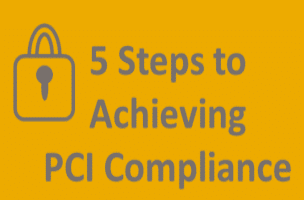5 Steps to Achieving PCI Compliance

Meeting PCI Compliance Requirements
It can be a difficult yet extremely important task for all businesses involved in data storage and protection to meet PCI compliance requirements. As cyber attacks and security breaches become more commonplace in today’s society, PCI compliance is vital as its purpose is to prevent such catastrophes. In order to successfully meet PCI compliance requirements, here are 5 recommended steps to take.
 Conduct a Formal Risk and Vulnerability Assessment
Conduct a Formal Risk and Vulnerability Assessment
Many companies have implemented a formal assessment to find any possible vulnerabilities or exploits that could possibly lead to a security breach.
 Segment Your Company’s Network
Segment Your Company’s Network
Through segmenting and isolating networks that store, process, or transmit data, you can reduce the scope of PCI compliance and the risk of breach.

By assessing and analyzing data to see which is absolutely necessary, and which can be outsourced, your business can eliminate many potential issues in PCI compliance.

In assigning ownership to one member or team, those involved will feel much more responsible and thus will be more likely to be successful in maintaining security and achieving compliance.

While companies are willing to invest in technology to address PCI requirements, it is also important to teach employees the rules of compliance in order to heighten awareness and reduce the risk of breaches.
About the Writer

Prior to founding CISO ToGo, Wade worked as the full-time Chief Information Security Officer for such large enterprises as BJ’s Wholesale Clubs, Ahold USA, Sensata Technologies, GTECH Corporation, Citizens Financial Group and CVS Pharmacies. In these roles, he was responsible for providing leadership and direction to all cybersecurity and IT risk efforts associated with information technology applications, communications and computing services.